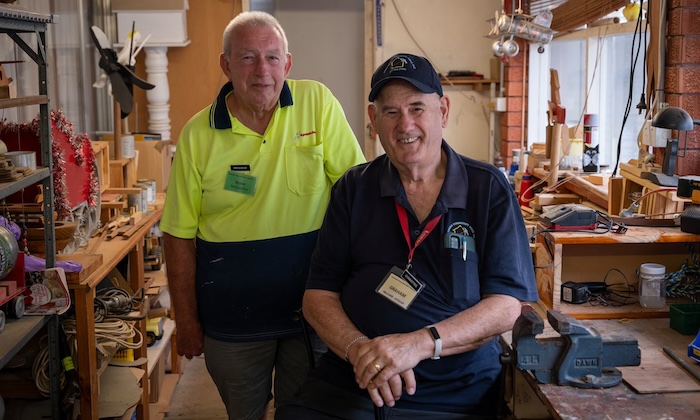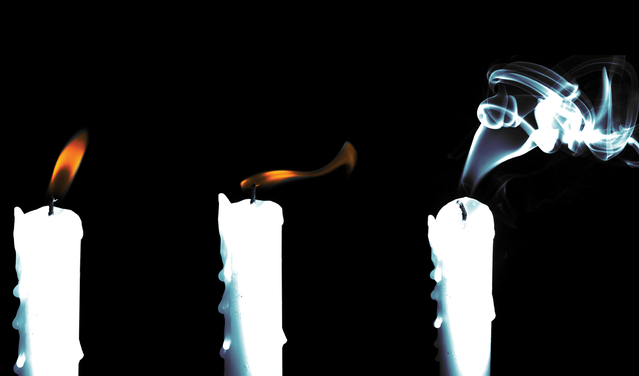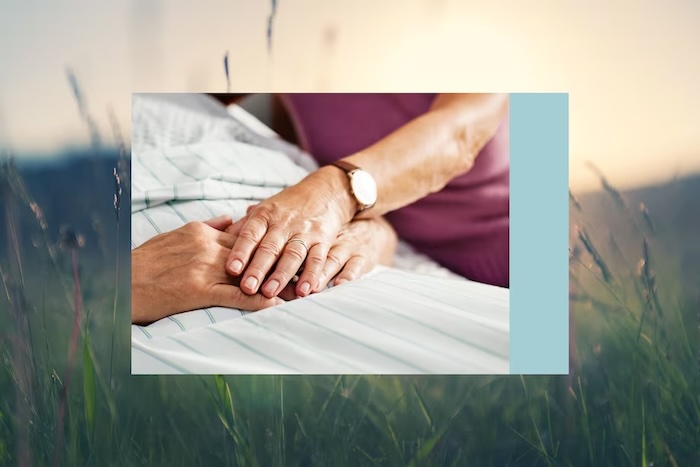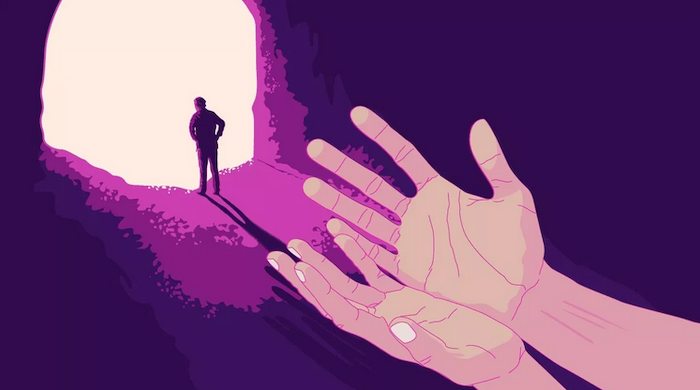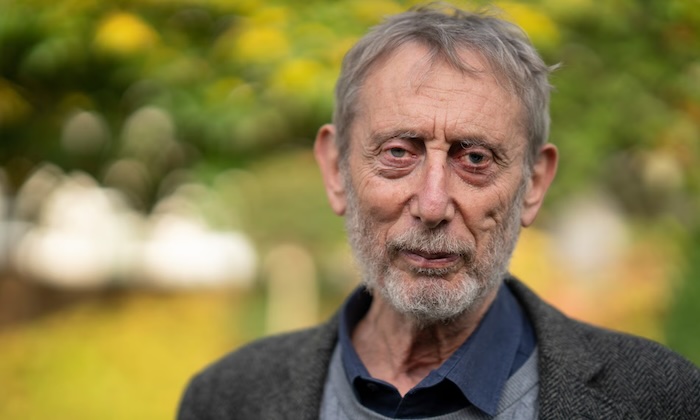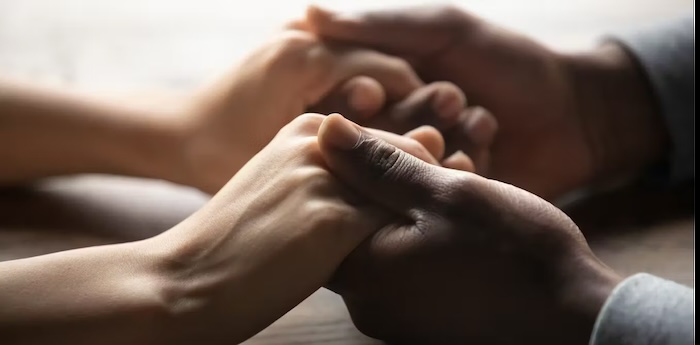— As we walk the halls of the children’s hospital, I hope my neighbor is smiling, knowing how much joy her dog brings to everyone she meets
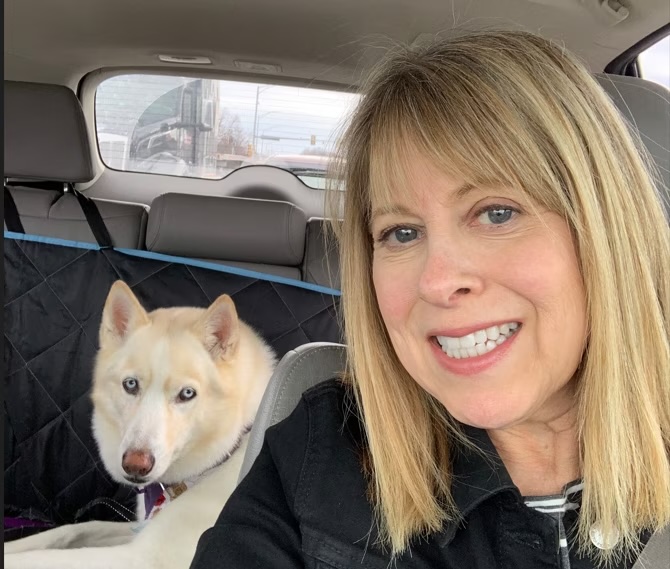
by Lisa Kanarek
In the early morning after Thanksgiving, I awoke to red lights blinking through the blinds. I slipped a long, puffy coat over my pajamas and rushed outside.
An ambulance idled in my 80-year-old neighbor Sandra’s driveway as paramedics rolled a gurney into her home. Although I hardly knew her, my neighbor’s last trip to the hospital would set off a ripple effect that would change my life and affect others she’d never met.
I remembered Sandra had a large dog, so I texted her friend, Gilda. She took care of the pup any time my neighbor was away, and Gilda and I had exchanged numbers once. Gilda was out of town and told me where to find the spare key to Sandra’s house.
During the three years my husband and I lived next door, I had only been inside Sandra’s home twice. The first was a few weeks after we moved in. I rang the doorbell, and Sandra, dressed in a colorful skirt and blouse, invited me in. I guessed she was in her late 70s.
After introducing myself, her dog walked up to me, sniffed my shoes, then lay on her side.
“I’m Sandra, and this is Gaia,” she said. “She loves having her stomach rubbed.”
I liked my neighbor immediately. She was direct and matter-of-fact with her conversation.
“Trash pickup is on Mondays, and introduce yourself to the security patrol so they’ll know who you are if you need them,” she said as she wrote down her phone number and the security number. She told me about neighborhood parties. “I don’t have time for those,” she said. “I have other things I’d rather do.”
The second time I saw her was a month later when I brought her a plant. She had thanked me for the gift but hadn’t invited me in.
I thought of Sandra and our last conversation as I turned the key and stepped inside her home. The caramel and white husky strolled toward me, her head down and her eyes locked on mine.
Unable to remember the dog’s name, I looked down at the silver tag on her collar. “Hi, Gaia,” I said. She dropped to the ground and rolled on her back so I could rub her white belly.
I texted Gilda to ask if the pup could stay with us until she came back to town. “Sure. Thank you!” she wrote back. During the next few days, Gilda called to tell me she was trying to find someone to watch the dog while Sandra was in the hospital. I told her not to worry; my husband and I would take care of Gaia. I walked her twice daily.
A week later, when Sandra returned home, Gilda temporarily moved into the second bedroom and became her full-time caregiver. As my neighbor’s health deteriorated, Gilda and I became friends. I asked her if I could continue my walks with the dog.
Each time I picked up Gaia, Gilda and I chatted for at least 10 minutes. During one of these conversations, she asked me a question I wasn’t expecting.
“Do you want to keep Gaia when Sandra is gone?”
“She’s not going to live with you?” I asked.
“I wish she could, but we might be moving, and the new yard is too small for her,” she said.
“We’re happy to adopt her,” I answered. “We love Gaia already.”
>Less than two weeks later, Gilda texted me: “The hospice nurse is on her way. I think it’s time.” Within an hour after I arrived at her home, my frail neighbor took her last breath. I waited in the kitchen as Gilda and her husband said their tearful goodbyes.
The hospice nurse called the funeral home, and Gilda’s husband stepped into the kitchen. He patted Gaia on the head and scratched her back. “It’s time to take her to your house,” he said.
I attached her faded orange leash to her matching collar. By the time we crossed Sandra’s driveway and stepped onto my lawn, tears dripped onto my coat. I was mourning a woman I’d only talked with twice, but I felt connected to her through her animal companion, now mine. For weeks, I watched Gaia closely, knowing she would be sad, confused and possibly disoriented moving to a new home.
A month after Sandra died, I completed training as an end-of-life doula. Gaia was calm on our daily walks, even around the small children who stopped to pet her, so she seemed to be a good match as a therapy dog.
I finished the online training with Pet Partners, passed the in-person test and then applied to volunteer at a local children’s hospital.
On our first day at the hospital, I hid my shock at seeing a young girl with a shaved head and tubes attached to her arm, a patch on her hand to hold the IV needle in place. I knew the hospital specialized in treating complex cases, but I hadn’t mentally prepared for what I would find behind each door. Gaia had a different reaction, not hesitating to pad up to the bed and let the girl scratch her behind her ears.
Now, every other week, I slip Gaia’s purple therapy dog vest over her neck, and we head across town to see patients and their families. Before leaving the hospital room, I hand the child a trading card with Gaia’s picture on the front and facts about her on the back: favorite food, activities she likes and her birthday. When I could not confirm her date of birth, I listed my neighbor’s birthday, Feb. 14.
More than eight months later, I’m no longer surprised by the young patients we see. I follow Gaia’s lead and focus on making the children smile. They rub her back and tell me about their pets. Recently, one little boy asked for her phone number, while another told his mom, “Look at her badge, Mom. She’s a doctor!”
Gaia’s life changed when she became part of our family. She interacts with the kids down the street (her fan club) during our walks, and she provides laughter and levity to sick children, all with her tail wagging. She goes with us on road trips and to outdoor festivals where she knows that people will stop to run their hands down her fluffy back or ask her for a high-five.
My life is different too. Meeting dozens of people during our visits has brought out the extrovert tendencies I lost during the pandemic. Before I knock on each patient’s door, I breathe in, then greet families with confidence, knowing the reaction my sidekick will receive. The same skills I’ve learned through being with Gaia, I use as an end-of-life doula. One of the first ways I bond with a patient or a family member is through a conversation about our dogs.
Adopting my neighbor’s dog has allowed me the opportunity to pay it forward in ways I’ve never experienced before. As we pass through the halls of the children’s hospital, I think of Sandra and hope she’s smiling, knowing how much joy Gaia brings to everyone she meets.
Complete Article ↪HERE↩!

